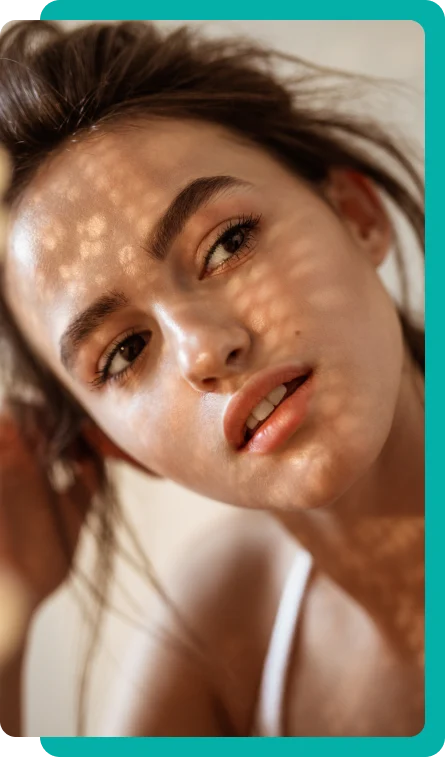For Patients
About
For Providers
Locations
Blog
Contact
Menu
If you're looking to add more cheek volume, then you have plenty of options to choose from. And while fat grafting, cheek implants, and plastic surgery are some of the more well-known and lasting options, a good alternative to these would be dermal filler injections. These cheek fillers are non-invasive and can give you great results, often without the downtime associated with surgery.
But does cheek filler have any side effects? Like all cosmetic treatments, there's always a small risk of encountering complications during your procedure. Thankfully, the odds of experiencing any serious side effects from cheek filler are quite low – and the side effects that you will likely experience aren't something you should worry about.
Dermal filler injections have rapidly risen in popularity as a safe, effective, and easy method for skin rejuvenation. They don't require any surgical treatment, so they have no downtime; and their results are comparable to plastic surgery, even if they don't last as long.
With a few injections in the right places, you can get additional volume in your cheeks. This method is far less taxing on your skin compared to plastic surgery and other cheek augmentation methods, but dermal filler injection will still strain your skin as it is still a foreign substance. This is what causes the side effects that are typically associated with dermal filler treatment.
Most of the side effects are caused by the action of injection filler material into your skin and are less likely by the filler itself. Anything that breaks the skin gets treated by your body as a potential threat, and its defense mechanisms trigger the symptoms that manifest as side effects after your procedure.
Fortunately, because dermal filler treatments don't cause significant trauma to the skin, your body can bounce back relatively quickly after your treatment is done. For some patients, it's even possible that they won't experience any side effects at all.
Here are some of the common side effects that you'll experience from cheek filler treatment:
Swelling is by far the most common side effect a patient reports after a dermal filler injection. While this can be caused by the dermal filler itself, the most common case is your skin's reaction to the needlepoint injection.
During a dermal filler injection, a needle is inserted underneath your skin to deposit the filler material in the treated area. The skin registers this as an injury (no matter how slight it is) and sends additional blood to the area to induce healing and prevent further injury. However, this response is far less obvious after cheek filler treatment compared to cases like an acute injury.
In most cases, the swelling from cheek filler isn't that pronounced, even if you feel it after your treatment. That's because the layer required for cheek filler injections is deeper compared to other areas of the skin. Complications from swelling are also rare, and any cases of swelling usually go away after a day or two.
Bruising is another commonly reported side effect, and this usually occurs if your injector hasn't been careful enough. Needlepoint treatments like dermal filler pierce their way through the skin, which can sometimes go through a blood vessel. This causes the blood vessel to burst, resulting in a bruise.
In most cases, the bruises a patient will experience from dermal filler treatment won't be as bad as any other cosmetic procedure. But because the treatment area is on the cheek, bruising can appear more obvious.
Bruising can last longer than swelling but is also one of the first side effects to disappear after cheek filler injection. A patient who wants to avoid this complication should seek out an experienced injector like a cosmetic dermatologist or plastic surgeon – they're far more likely to have the experience needed with facial anatomy to avoid puncturing blood vessels.
Bleeding is a relatively minor side effect you can experience after facial fillers. The skin on your face is thinner compared to the rest of your body, even for areas like the cheeks. If your injection hits a blood vessel, this can result in bleeding. Fortunately, most cases of bleeding after cheek filler subside a few hours after treatment. Even if a vein is punctured, you can expect this particular symptom to subside within the day.
Meanwhile, if you experience prolonged bleeding (either continuous or on and off) after your treatment, it's a possible sign that something has gone wrong with your injection. Inform your cosmetic provider if this happens and seek medical help immediately.
Because of the variety of different dermal fillers, your skin can experience allergies to specific formulas. This is far more likely to happen if your filler material is something animal-based.
Allergic reactions require professional help - they're not something that a patient should manage on their own. In most cases, you'll need to have the filler material removed or dissolved from your skin to avoid further complications from happening.
There are also some situations where your body develops an allergic reaction from the cosmetic procedure itself, but this rarely happens.
This extremely rare side effect only occurs if your surroundings or the environment isn't sterile during your filler treatment. This is far less likely to happen with a professional cosmetic provider since they have the right facilities and training to avoid this from happening.
If you experience an infection after dermal filler treatment, seek professional help immediately. Serious complications can occur if you attempt to self-medicate or leave the infection unattended.
Additionally, an infection can also occur if you don't follow your recommended post-procedure aftercare. Even if you can resume your normal activities soon after cheek filler treatment, you should still avoid exposing yourself to situations where the treatment area can be exposed to bacteria.

In most cases, a patient won't need much in the way of care after cheek filler. Even if you get multiple injections in the treatment area, dermal fillers are a non-invasive cosmetic procedure that won’t traumatize your skin that much.
However, if you are facing some complications with your dermal filler injection, here are some things you can do:
For cases like swelling and bruising, applying a cold compress on the cheek area can help reduce swelling. However, a patient should be careful to not nudge or move the skin too much, since that increases the risk that the injectable filler will move away from the injection site.
You should also avoid putting the ice directly on your skin since you can experience ice burn. This can interfere with your body's natural healing processes and can cause your recovery to take longer.
Paracetamol is a safe medication to take after injectables like cheek injections, although patients should be careful to only take medications for pain or discomfort as advised by their cosmetic provider.
Avoid medications that thin the blood like ibuprofen and aspirin, since their blood-thinning qualities may make bruising and bleeding far worse. Ideally, you should inform your doctor about the medications that you're taking and how they interact when your body recovers from cheek filler treatment.
In very rare situations, your side effects from cheek filler treatment require medical attention. This is why it's important to monitor your state after your facial filler treatment, especially if you're getting cheek injections for the first time.
Your cosmetic provider can give you more instructions on how to take care of yourself after your cheek filler injection. But if you want to be absolutely sure that you'll be safe, you should also have your primary care doctor accessible in case something goes wrong.
Because injectables are non-invasive, there will be patients that encounter minimal to no side effects at all, especially if they're used to getting dermal filler treatment. If you want to increase your chances of experiencing side effects, do the following before your treatment:
Overall, your odds of not experiencing side effects after dermal filler treatment are quite high, especially if you find a skilled cosmetic provider like a dermatologist or a plastic surgeon.

No dermal filler treatment is without the risk of side effects – but luckily, the ones you'll come to expect won't have to be so significant to deal with. As long as you find an experienced injector, you'll only experience common, mild side effects. You might even be part of the majority of patients that don't feel anything at all.
If you are looking for such an expert for your cheek filler injection, schedule a consultation with Dr. Lanna Aesthetics today. We have extensive experience in administering dermal filler injections in a variety of areas, including the cheeks. Our experienced staff can help address any cosmetic concern that you may have, without the need for plastic surgery to give you the best results.

Join Dr. Lanna & Dr. Doshi for a Transformation
Unlock the possibilities with our certified facial and oculofacial plastic surgeries. Attend our free webinar to find out how we can tailor solutions for you, with financing available to fit your budget.
